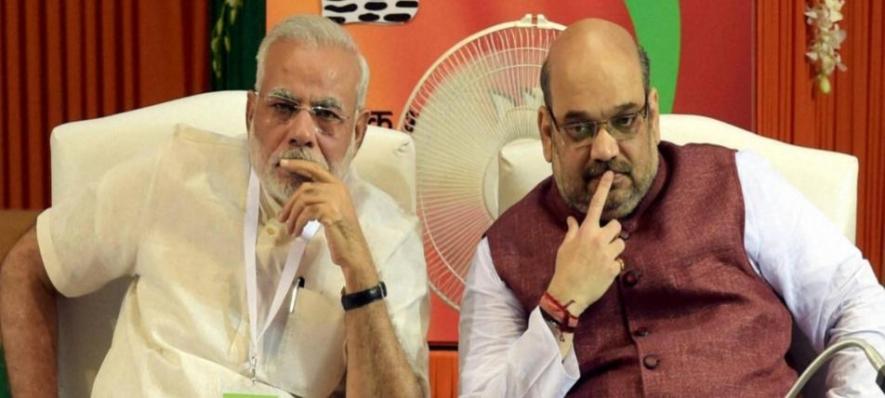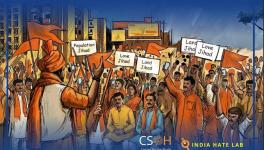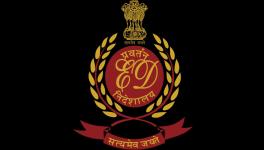How to Win Elections: The Modi-Shah Primer

The Bharatiya Janata party under Prime Minister Narendra Modi and party president Amit Shah is a formidable beast that was again on display in the elections in the North East. The two have demonstrated again that any and every thing goes, with the objective of forming the government being the primary goal. The means justify the end, is the mantra for the BJP juggernaut.
In the process they have set new rules, new goals, evolved a new methodology laced of course with hard work, determination, overriding ambition.
Money envelopes an election in India, seeming rather one sided even to the voters in any specific state. But this is just one factor for the two top leaders who have been working the states according to their will, their strategy, and a very careful, calculated approach. The Rashtriya Swayamsevak Sangh is a partner of course, but even its role is often determined by now the two recognised master strategists who work with a meticulousness that astounds even their own.
Little is left to chance and the preparations for an election that PM Modi, Shah and the RSS are particularly interested in starts years before the due date. As in the North East that has been defined as a target area by them not once but several times in public remarks since this government came to power, and where the campaign is adjusted to the aspirations of the states, and the peculiarities are addressed with a strange kind of flexibility not seen from the BJP in other parts of India.
The campaign creeps up on the voter with the ‘shock and awe’ in the results as in Assam earlier, and Tripura now with two big political parties of the region being completely dislodged. This is not by accident, but with strategy and a well crafted plan.
The methodology of course follows a fairly set pattern: the state, in this case the states, is flooded with RSS workers long before the elections are due who spread through the districts; senior RSS and BJP leaders assigned the state physically camp there and work out the modalities; Shah visits the state several times to ensure every end is covered and deals personally with loopholes and last minute hassles; PM Modi makes a couple of visits before and then revs up the campaign after the elections are declared. His speeches are a response to ground feedback, adjusting the thrust accordingly.
In the process the weak points in the state, and accordingly the campaign, are identified, the plan to address these is made, and the more vulnerable groups in any state targeted either by playing on their fears and apprehensions, or by addressing their aspirations with promises. Usually a combination of both.
Development of course remains the cover of the campaign, with PM Modi for instance maintaining that the North East was central to his Look East policy, the fulcrum through which trade and business would be routed. Assam And Tripura in this region became particularly important as these were being run by the Congress and the Left front respectively, and hence essential to the larger gameplan of annihilating these two political groups. Hence, a full throated attack on both that began far before the respective polls. This too has a two pronged report: one the attack in public following the well laid out lines of corruption and lack of development. The second being far more lethal, away from the public eye, a potpourri of rumours and propaganda and half truths that is then spread through the districts by the cadres following instructions to the letter.
For instance Assam where elections were held earlier went through a virulent communal campaign based on the Bangladeshi immigrant issue, with Muslims as a larger entity being woven in with illegal migration, terrorism, violence et al. The effort to polarise voters along religious lines was visible and brazen, and succeeded in the face of a Congress party (see second part of this series tomorrow) that had given up its hold on the state. And was not even trying to fight a serious election, at least insofar as the central leadership was concerned.
The BJP, on the other hand, focused its attack on the Congress both at the centre and in the state. Then Chief Minister Tarun Gogoi, ageing and ailing, was unable to mount a counter and Congress leaders Sonia and Rahul Gandhi seemingly disinterested. Popular Congressman Himanta Biswa Sarma who wanted to be the CM was virtually turned away from 10 Janpath, and returned to walk straight into the open arms of the BJP where he has turned out to be a major asset. His role in persuading Nagaland parties to go with the BJP now is well known.
In this round of elections the Left has born the brunt of the attack with the BJP sensing full victory in Tripura, This was the focus of Modi-Shah attention with RSS functionary Ram Madhav being the man on the ground. The ‘everything goes’ approach had the BJP propping up the Indigenous Peoples Front of Tripura to pick up the cudgels against the state government and address the tribals with its demand for a separate state.
The BJP on its part kept up a strong campaign against the Left, with CM Manik Sarkar being the target through propaganda that did not draw its veracity from facts. The strong, vicious, well prepared campaign worked and the Left found itself out of power. Sarkar was identified by the Shah-Modi machinery as the man on which the Left reputation rested, and in the weeks before the elections he bore the brunt of a vicious attack. The idea of the campaign is not to win over all the voters, but to create elements of doubt sufficient enough to make the voter look at the alternative.
And while there seem to be some teething troubles between the BJP and the IPFT over ‘Tipraland’ both have not hesitated to come together in a bout of violence targeting the Left cadres in their homes and offices. The CPI(M) has reported 600 odd incidents of violence in less than 24 hours, with the party cadres leaving their homes and seeking safety in numbers. Statues have been brought down,and CPI(M) cadres as well as their families currently living in a state of terror. There are some voters who shifted sides now decrying this, but then it is too late and the government has changed.
In Nagaland the BJP has been diverse in its affections. The Naga operation started with the ‘framework’ with the NSCN(I-M), the clauses of which remain unknown. Announced as an ‘accord’ it became an agreement over the past two years, as the government was unable to make it public given the chaos it could generate in Nagaland, and the neighbouring states. However, it was a great entry point for the BJP into Nagaland, and today ihe party has soft footed its ideology in the Christian dominated state. In that the cow slaughter campaign that has resulted in several lychings in other heartland states of India, has been placed on the backburner here because of the dietary habits of the population.
Instead the BJP has gone out of its way to assure the Naga voters that it will not intervene in their culture, and is only concerned about their development. It has improved its seats from two to 12 but even so the Naga voters have remained with the two main regional parties, dividing their votes between the ruling Naga Peopels Front and the breakaway National Democratic Progress Party. However, the BJP remains central to government formation in the state and currently has both the regional parties vying for its affections. No ghar wapsi here, no cow protection, no love jihad.
In state where it has lost the elections technically as in Manipur and now Meghalaya that were won by the Congress, the BJP brazenly used money power and local politics to win over legislators. But it also made it clear that it was willing to bend as far as possible to get a government in which it had a say, going in these states. The RSS patience to wait it out, so long as the first step went its way held sway.
The Congress was found napping in Manipur and an election won, ended with it out of power as legislators were stolen from under its nose. And now in Meghalaya although it despatched a high level team to ensure a Manipur did not happen, it did in that the BJP again stole the show while the Congress was claiming its ‘right’ to form the government.
Topping it all are the two human dynamos, Shah and Modi who are ceaseless workers, relentless doers, and more than a match for the combined strength of their own party let alone the Opposition. They never appear to slack, with every state as important as the other in totting up numbers of victory.
Ideology apart, the two share a unique working relatonship that has shown no cracks in the years of close functioning; they seem to be always on the same page, indeed the same word; and share a certain ruthlessness and a penchant of secrecy that has grown stronger with time. One would hesitate to use the word ‘chemistry’ for this relationship, that is a first in Indian politics between two political adults whose mission is shared, as is a working relationship that is like no other seen in Indian politics in the past.
Disclaimer: The views expressed here are the author's personal views, and do not necessarily represent the views of Newsclick.
Get the latest reports & analysis with people's perspective on Protests, movements & deep analytical videos, discussions of the current affairs in your Telegram app. Subscribe to NewsClick's Telegram channel & get Real-Time updates on stories, as they get published on our website.
























